A number of the Japanese black pines I’ve grown from seed have been developed in the exposed root style. It’s a fun style to work with as roots offer possibilities that aren’t always available for specimens whose roots are firmly secured in the pot.
My first exposure to the style was at the Green Club – the sales area for the Kokufu exhibit. The style seems to be gaining popularity as I’ve seen more and more pines with exposed roots at the green club in recent years.
I enjoy seeing these trees as they provide great inspiration for techniques to try – and to avoid – as I go about growing pines in this fashion. The following trees were available at the Green Club in February, 2014.
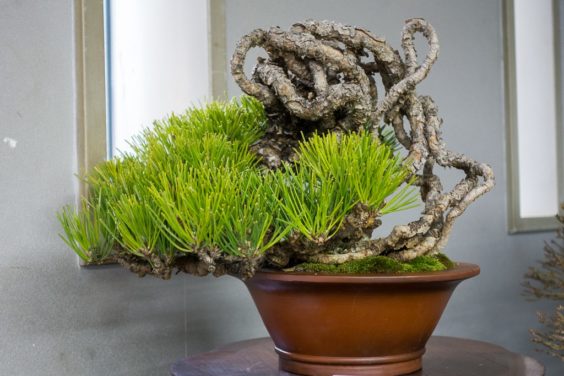
Exposed root black pine #1
This first specimen is somewhat of a semi-cascade bonsai. I don’t know exactly how such a tree might form in nature, but I like the movement of the roots.
The specimen below looks like a broken Slinky with pine foliage – fun, but far less natural.
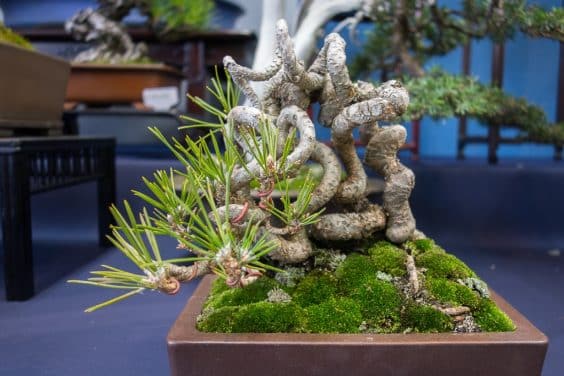
Tree #2
Simply letting the exposed roots thicken a bit can help. Although the roots on the specimen below have yet to show age, at least the twists are less artificial.
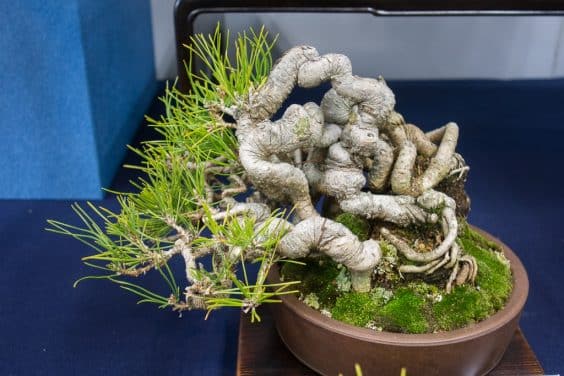
Tree #3
The next tree is doubled back on itself. I’m not sure if these are exposed roots, a crooked trunk or a combination of both.
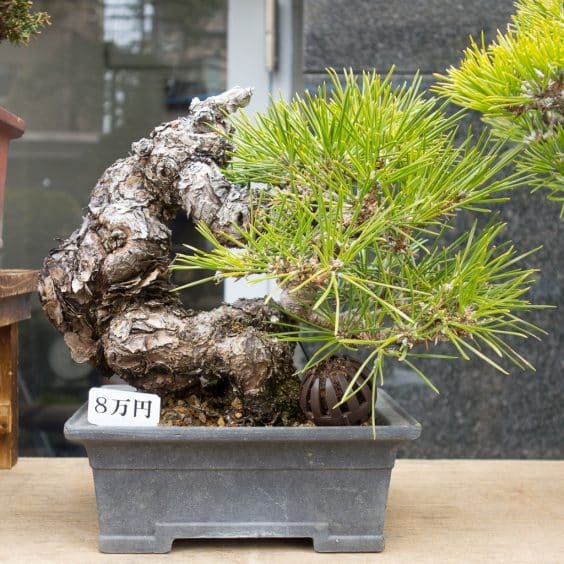
Tree #4
As bonsai get bigger, more options are available for styling the roots. The tree below shows an interesting combination of smooth vertical curves and more jagged horizontal lines. The foliage sits mostly on top.
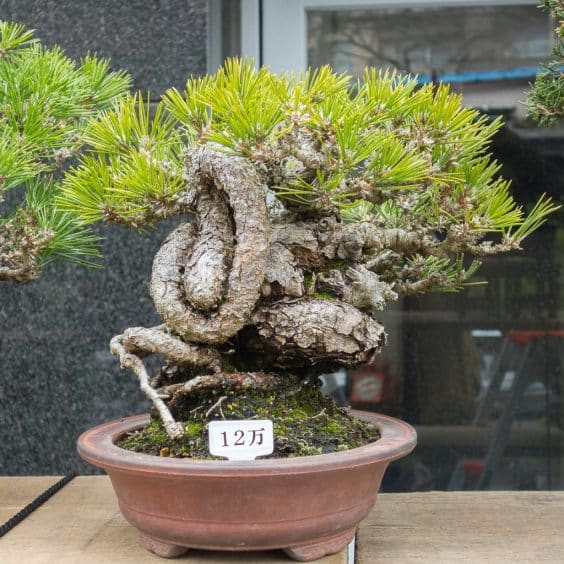
Tree #5
I might like the tree more if the foliage were better incorporated into the lower part of the tree. It’s also hard to find a solid connection between the surface roots and the lower part of the trunk.
The tree below brings a smile to my face. I’ve witnessed several attempts at roots that extend far above the foliage and not all have been successful. I appreciate the tree for the root technique and would be interested to see it after the branches receive more attention.
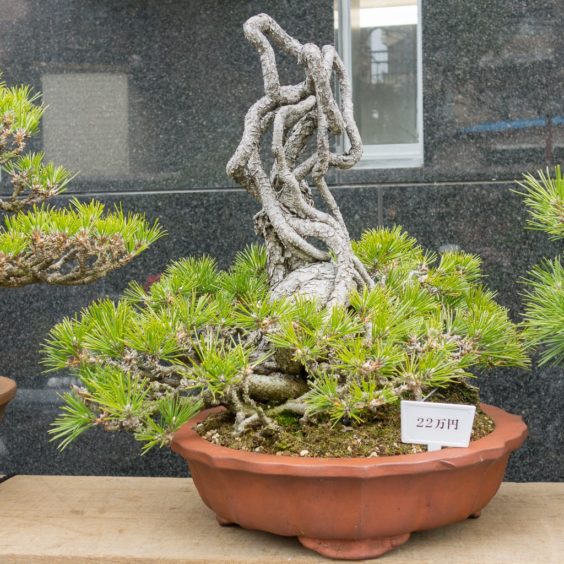
Tree #6
Tree #7 shows how unorthodox the exposed root approach can be. There is a single high root, lots of foliage to the left and to the right, and some interesting back and forth in the middle.
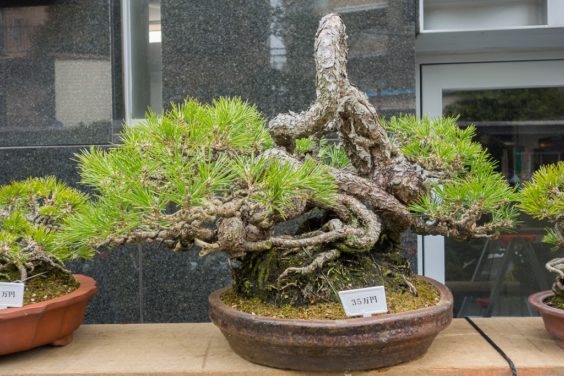
Tree #7
Tree #8 is a more mature broken Slinky. I’d actually be curious to see what the tree looks like in another 20 years when the bark shows even more age.
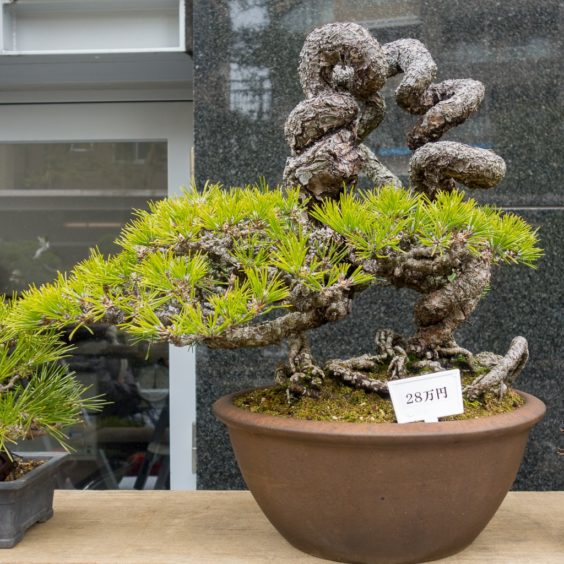
Tree #8
The last tree is a wild tangle of roots below a somewhat standard black pine trunk and branches. Standing before the tree, I found myself following the roots around in an attempt to better understand which were coming and which were going – a level of engagement I didn’t find with some of the less-interesting specimens.
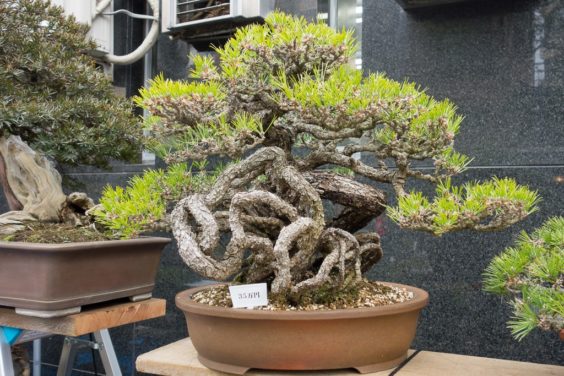
Tree #9
This fall, I’ll be leading a workshop on exposed root black pines at the Golden State Bonsai Federation’s 39th Convention in Sacramento, California. We’ll start with seedlings and find ways to plant them to generate the styles and shapes we’re looking for. The workshop is sold out, but do let me know if you’d be interested in such an event in the future as I’m always happy to work with pines.
✕
Subscribe to Indian Bonsai Art
New Posts Delivered Every Tuesday and Friday
